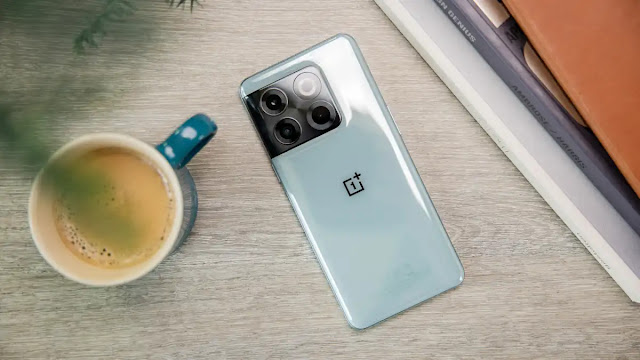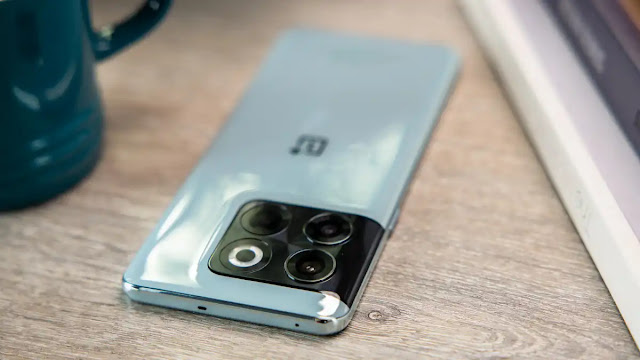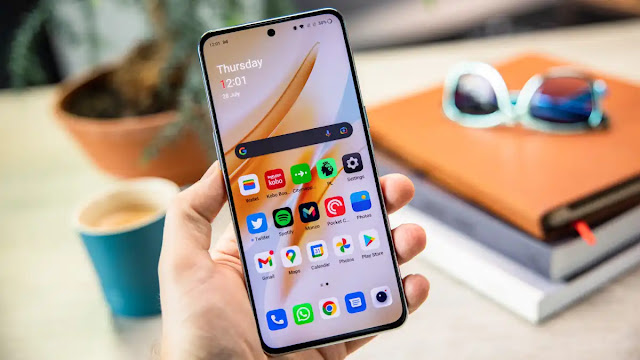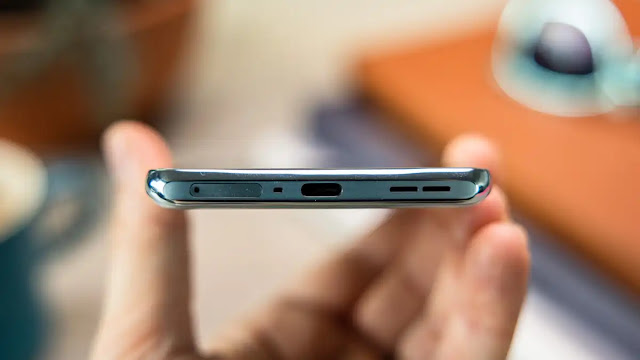A near home run for OnePlus.
Pros
- Great performance
- Insanely fast charging
- Very good flat 120Hz display
Cons
- No alert slider
- No wireless charging
- No IP rating outside US
Our Verdict
- The OnePlus 10T is a good all-round flagship phone with amazing fast charging, solid main camera, and a great flat display for a reasonable price in today’s market – but there’s no alert slider switch, wireless charging or IP rating in most countries, and the company’s Nord 2T has the same cameras for a much lower price.
The OnePlus 10T is a very good smartphone with premium build quality, a great display, top tier performance, and insanely fast charging speeds.
At $649/£629/€699/₹44,999 it’s also one of the best value high-end phones with Qualcomm’s powerful, and power-efficient, Snapdragon 8+ Gen 1 chipset.
It’s the first time a OnePlus ‘T’ phone is being sold alongside the older model while also bearing a near-identical design, but the two phones have quite a lot of differences under their hoods.
Thankfully the OnePlus 10T is a superb phone, but it does struggle to justify its price given the existence of the company’s own Nord 2T, which has the same rear cameras, performs well for a mid-ranger, and costs a lot less.
Design And Build
- No alert slider
- Unibody design
- Gorilla Glass 5
You’d be forgiven for mistaking the OnePlus 10T for the older OnePlus 10 Pro given their very similar looking rear plates. On the 10T, the camera module has four distinctive rings with three camera lenses joined by a circular flash in the top right position.
I didn’t like the look at first, but it has grown on me, much like the green hue of my ‘jade green’ review sample has. Its glossy finish made of Gorilla Glass 5 instantly picks up fingerprints but does make the phone grippier and is finished off with glossy silver side rails, which are plastic instead of metal. It’s a good looking, great feeling phone although it slides off flat surfaces including tables with the slightest nudge. A case is required to avoid impact disaster.
Sorely missed on the 10T is OnePlus’ signature alert slider, the small three-position switch that changes many of the company’s other phones from ‘ring’ to ‘vibrate’ to ‘silent’ and has been present on all its flagships until now, including 2022’s 10 Pro and mid-range Nord 2T.
The only buttons on the phone are the power/lock button on the right edge and a single piece volume rocker on the left. On the bottom edge there’s a USB-C port and a down-firing speaker that pairs with the thin earpiece at the top of the phone to create a stereo pair.
One small thing to note is there’s only a free protective case included in the box in India, with the rest of the world missing out. The phone also does not have an official IP rating for dust and water resistance outside the US, which is frustrating at this price. Oddly, US models are sold with a certified IP54 rating, which in terms of water is safe against splashes but not submersion.
Display And Audio
- 6.7in flat OLED
- 120Hz
- Stereo speakers
The screen on the OnePlus 10T is one of the best things about it. It’s a 6.7in FHD+ OLED panel with a 120Hz refresh rate, and it is phenomenal. It’s a better-looking panel than the regular Galaxy S22 – OnePlus really knows how to tune its displays.
It’s also a flat display, so the edges are not curved and don’t taper away at the left and right edges like they do on the OnePlus 10 Pro. The punch-hole selfie camera is notably in the centre at the top for the first time ever on a OnePlus phone.
With a peak brightness of 950 nits, it’s also easy to see everything in direct sunlight though I still think Samsung’s Galaxy S22 Ultra has the 10T beat for outdoor readability. Add in a zippy touch sampling rate of 1000Hz with HDR10+ and 10-bit colour accuracy and this is a superb screen – one of the best you can get on a phone.
There is no headphone jack here and nor is there a dongle adapter in the box. The stereo speakers are very good, with clarity and bass you wouldn’t necessarily expect. Great for watching YouTube videos and listening to podcasts, but it won’t replace your smart speaker for music.
The fingerprint sensor is positioned low at the bottom of the display, a place I find trickier to quickly tap than higher up, where it is on other phones. But when you hit it head on it is quite reliable. I much preferred unlocking the phone using face unlock, the downside being this is much less secure than fingerprint biometrics.
Specs And Performance
- Snapdragon 8+ Gen 1
- Up to 16GB RAM
- 128 or 256GB storage
The OnePlus 10T is blazing fast. It’s got the Snapdragon 8+ Gen 1 chipset, which is basically an overclocked 8 Gen 1, the processor found in the OnePlus 10 Pro, Sony Xperia 1 IV, Vivo X80 Pro, Galaxy S22 Ultra, and several other high-end Android phones.
In GFX Bench’s performance tests we run on every phone we review, the 10T scored amongst the best scores we’ve ever seen, hitting 59fps or 60fps for each test, 60fps being the highest possible score.
But it scored slightly lower on Geekbench’s multi-core CPU test than the OnePlus 10 Pro, and 2021’s 9 Pro for that matter, which in my book shows two things: that the noticeable gains in mobile processors are incredibly minimal at the top end and are hard to measure, and that benchmark numbers only tell you half the story.
The other half of the tale is day to day usage, where the 10T absolutely sings. OnePlus says to think of the 10 Pro as the camera phone and the 10T as the performance phone, and the 10T lives up to this billing. I never saw dropped frames or stuttering animations, and although OnePlus’ software is quite unrecognisable from a few years ago, its flagship phones are still near flawless when it comes to performance out the box.
I tested the phone for more than a week on giffgaff’s 5G network in the UK and roaming in New York City, and the phone performed admirably. I don’t fully buy into OnePlus’s hint that it is noticeably more performant in everyday usage than the 10 Pro, but it is certainly a stunningly quick device.
There’s a whopping 16GB RAM in my review unit that kept umpteen apps running in the background (OnePlus says it can handle about 35) to instantly pick up where you left off. Suffice to say playing demanding mobile games is an absolute breeze for this phone.
You can also opt for a version with 8GB RAM and 128GB storage while Indian customers can choose a third 12GB/256GB option. Storage is non-expandable, though there is dual physical SIM capacity.
Battery And Charging
- 4800mAh
- 150W wired charging
- 1600 cycle promise
Alongside its lightning pace the OnePlus 10T is blessed with 150W wired charging, a small step up on the 10 Pro’s already superb 80W speeds but in reality the difference is minimal in charging times. The compromise on the 10T is that it does not have wireless charging.
Though this isn’t used in the phone’s consumer marketing, it’s quietly one of the 10T’s best features, if accurate. If you charge your phone once a day, 1600 cycles is about four and a third years, a decent chunk of time for your battery to remain in an optimum condition. Time will tell if this promise delivers.
Charging itself is close to magic with the two 2400mAh batteries able to charge safely together at this high speed for a total 4800mAh capacity. I plugged in with the phone at 0% and it charged to 88% in 15 minutes. The second time I did this it only got to 65% in that time but was at 100% by 23 minutes. That’s insanely good either way, and meant I only charged the phone when I needed to in very short windows of time. Overnight charging is a thing of the past here, and OnePlus says it has improved the cooling tech inside the phone to make sure it doesn’t charge hot.
This isn’t a two day phone by any means but I comfortably got a day’s use with power to spare during my testing.
Camera And Video
- Great 50Mp main sensor
- Inferior ultrawide and macro
- Same lenses as OnePlus Nord 2T
OnePlus has skimped on the camera specs for the 10T compared to the 10 Pro, and nor does it have the Hasselblad camera branding of that phone. In fact, it has the same three rear sensors as the OnePlus Nord 2T, a phone that retails for £369/€399 but is not for sale in the US.
So, the 10T has a 50Mp f/1.8 Sony IMX766 main wide-angle sensor with optical image stabilisation (OIS), which is commonly used on mid-range and flagship Android phones including the Nord 2T and Find X5 Pro. BBK Group must have a lot of the sensors lying around. OnePlus says it has tweaked the optics compared to the Nord 2T, but it is the same sensor.
That’s no bad thing though as it’s a popular sensor for a reason. Paired with OnePlus’s solid colour tuning, I love the look of shots in daylight, with just the right amount of saturation and contrast for my tastes. You’ll get more heightened processing with Samsung, more aggressive HDR with Google’s Pixels, and more true-to-life colours with iPhone, but OnePlus more than holds its own here.
You can also record solid video in 4K at up to 60fps, and fun slo-mo video at 1080p.
Less impressive are the supporting sensors, the first of which is an 8Mp f/2.2 ultra-wide. It’s serviceable and can capture some decent images in good light, but it captures far less detail than the main lens, and with different colour science and no OIS. Compare this to the Find X5 Pro, which uses the IMX766 for both the main and ultra-wide lenses, and the 10T is lagging.
But that’s how OnePlus justifies the two phones’ differences; the 10T is the performance phone while the 10 Pro is the camera phone. It makes sense, but that does not mean the 10T has a bad camera. It just has two inferior sensors found on one of its mid-range devices.
The 16Mp f/2.4 selfie camera is fine but struggles with white balance in sunnier conditions. It’s also inferior to the 32Mp sensor on the cheaper Nord 2T.
Software And Updates
- Ships with Android 12
- Three years Android updates
- Four years security updates
Let’s shine a light on the elephant in the room. OnePlus’s OxygenOS software has changed dramatically in recent years and is basically now the same as Oppo’s ColorOS bar some minor aesthetic tweaks. BBK Group, which owns both brands, decided to merge the two, so now OxygenOS looks a lot different to how it did even two or three years ago.
That’s not to say it’s an overall bad thing, but there is a certain character to the older version of OxygenOS that is lacking now. But it’s silly to review a phone based on what it could have been like, so I’ll stop.
OxygenOS 12.1 based on Android 12 is great. It largely keeps out the way but does prompt you to agree to many statements of usage when you first tap on system apps or various software options. I had to fiddle with the very customisable skin for some days to tweak it to my preferences – things like icon shape, size, accent colours, display and font sizes, etc – but now it feels great and very personal.
Most other Android phones with Android 12 get around their lack of physical mute switch or alert slider by showing whether the phone is in ring, vibrate, or silent with three different icons allowing you to quickly switch modes whenever the volume buttons are pushed. Maddeningly, this is not the case on the 10T, and you can only switch between either ring and vibrate, or ring and silent. I only worked out how to switch between those two options with trial and error.
There’s a fully featured always-on display that retains some of OnePlus’ traditional charm, though finding things in the settings menu can be a bit tiresome as options are hidden all over the shop.
OnePlus has opted to keep the older Android 11-style of notification shade icons, which are smaller than the new standard on Android 12, and I like this decision. Annoying though is OnePlus’s Shelf software that lurks behind a pull down from the right top edge of the display in an action copied directly from the iPhone’s Control Centre on iOS and iPhones with notches. I frequently accidentally opened Shelf when I wanted to pull down the notification and quick settings shade, which you now have to invoke from the centre or left.
OnePlus will give the 10T three years of Android platform updates and four years of security updates to keep it fully secure until 2027. This is pretty good for an Android manufacturer, with Samsung leading the way offering four years of Android updates and five years of security updates for most of its new phones. Google offers three and five respectively for Pixel phones.
Price And Availability
The OnePlus 10T costs $649/£629/€699/₹44,999 for the model with 8GB RAM and 128GB storage and costs $749/£729/€799 to get the 16GB/256GB version. The former only comes in black and the latter only comes in green.
OnePlus says there will be some regional variation in the European pricing, and India doesn’t get the 16GB RAM variant, with OnePlus instead selling a 12GB/256GB version for ₹54,999.
It’s available to buy in the UK from OnePlus and Amazon, in Europe from OnePlus, and in the US from OnePlus.
It makes the 10T an attractive saving over the $799/£799/€899/₹66,999 base model of the OnePlus 10 Pro, and also gives the $799/£729/€749 Galaxy S22 a run for its money (literally).
The value proposition of the 10T is questioned in the UK and Europe by the existence of the company’s own Nord 2T, which has the same camera sensors and great performance for £369/€399, It’s a different story for the 10T in the US where the Nord 2T isn’t available.
Verdict
The OnePlus 10T is an affordable flagship phone whose fine balance of price and specs harks back to the plucky OnePlus of a few years ago. It skimps in mostly the right areas to deliver a phone with bleeding edge specs that undercuts the higher-end OnePlus 10 Pro enough on price to present customers with a clear buying decision.
The price just about undercuts the 10 Pro – and other Android competitors – enough to justify the 10T’s existence. If you don’t need wireless charging and a telephoto lens, the 10T will save you some cash.
The Nord 2T is also available for £369 with the same rear camera set up, but if you want the very best processor on an Android phone right now and a whopping 16GB RAM, the 10T is a solid all-rounder with a lengthy software promise, and is easy to recommend.
Specs
- Android 12 with Oxygen OS 12.1
- 6.7in FHD+ 2412×1080 AMOLED, 120Hz, HDR10+
- Qualcomm Snapdragon 8+ Gen 1
- 8/12/16GB RAM (DDR4)
- 128/256GB internal storage (UFS 3.1)
- 50Mp, f/1.8 main camera, PDAF, OIS
- 8Mp, f/2.2 ultrawide
- 2Mp, depth
- 16Mp, f/2.4 selfie camera
- Fingerprint scanner (in-screen)
- Wi-Fi 6
- Bluetooth 5.3
- GPS
- NFC
- 5G
- Dual-nano SIM
- USB-C
- 4800mAh non-removable battery
- 150W wired charging
- 163mm × 75.37mm × 8.75mm
- 203.5g


















0 comments:
Post a Comment